Cayman Progressives: Our position on the PACT Government’s proposed cargo port project and the future of our seaport
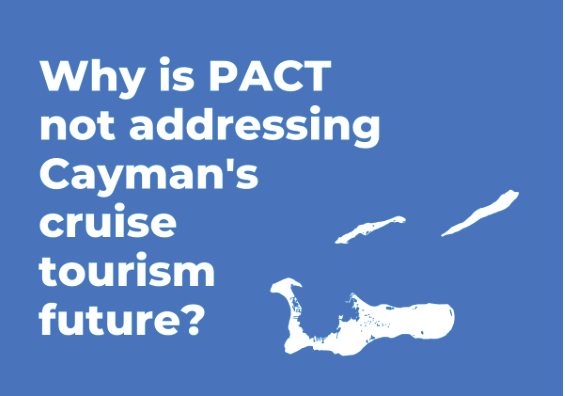
By now, you may have heard that the PACT Government is considering the development of a new cargo port and have produced a Cargo Port Development Strategic Outline Case (SOC)
We believe the SOC is flawed, as it seeks an answer to the issue of cargo without addressing the question of the future of cruise tourism. The Government’s strategic outline case indicates that without cruise revenues, the Port Authority will have to increase port fees on cargo, or find new revenue, to pay to finance a stand-alone cargo dock.
The question of the future of cargo and cruise is inseparable and cannot be viewed in isolation.
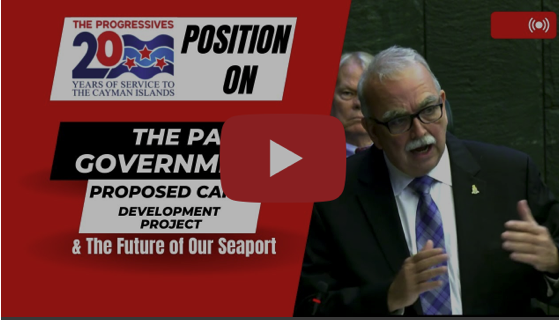
Our Position
The PACT Government has published a strategic outline case setting out options for developing a stand-alone, modern, larger cargo port for the Cayman Islands. We are pleased that the Government recognised the need for a larger modern cargo port. However, we have questions about the affordability of a stand-alone cargo facility. We are concerned, too, that the project funding and other proposals in the SOC will come with huge costs that will drive up port fees and prices consumers pay at supermarket shelves.
The Progressives have long understood the need for an improved and larger cargo handling facility.
The last Progressives Government brought a solution that would have provided the country with a larger, modern cargo port at no direct financial cost to the country. We did this by linking a modern cargo port to a new cruise berthing port, with the cruise companies designing, building, financing, and maintaining the facility.
Repayment would have come from the ‘head tax’ charged on arriving cruise passengers. An arrangement that took several years to work through. However, a combination of environmental concerns, legal delays and the impact of the pandemic meant that the cargo/cruise port redevelopment, as envisaged, did not proceed.
Any stand-alone cargo port proposed by Government will come with environmental consequences but will also come with high costs that will be borne by the country and by consumers. Indeed, the Government’s strategic outline case states: “Under normal circumstances, with cruise revenues, PACI (Port Authority) could have accomplished the improvements at the cargo dock over six years without any borrowing, but funding any form of expansion or development from current cargo revenues alone is just not possible unless fees were raised significantly”.
And so the question of cargo and cruise cannot be viewed in isolation. The Government’s Cargo Port Development Strategic Outline Case is therefore flawed. It seeks an answer to the issue of cargo without addressing the question of the future of cruise tourism because that is a question to which the PACT Government does not have a coherent answer.
This was especially obvious when Minister Bryan promised the country in September 2022 that cruise growth would return to 2019 numbers. Then by October, he was forced to admit he was wrong and that cruise numbers would fall off by 60% compared to 2019.
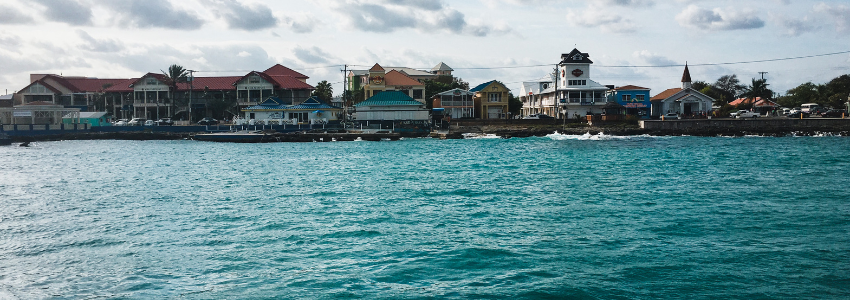
Regardless of how he got it so wrong, the Minister should be spending more time persuading the cruise companies to bring smaller cruise ships to our shore over the next few years and seek to have them here twelve months of the year to even out the passenger flow and maintain our numbers. Having a walk-off/walk-on cruise pier may incentivise them to do so. Involving them directly with financing and building a cargo and cruise dock, with repayment coming from cruise passenger head tax, will avoid the financing costs to the country and the need to increase port fees, and thus the cost to the consumer, to pay for a stand-alone cargo facility. And it will improve and modernise our cruise tourism product.
The cruise companies participating in a Public Private Partnership (PPP) is a sensible solution to financing the project. It will also help guarantee the future of our cruise tourism product.
So what are the costs that will need funding? The Strategic Outline Case (SOC) contains ‘rough cost estimates’ made over a year ago.
These are:
The SOC estimates that with the cargo port remaining in George Town, the total cost is estimated at circa $65M to provide for larger cargo ships. In addition to improved facilities, the SOC says this expansion would provide berthing for vessels with a draft up to 25 feet. (Several cruise ships that stop in Grand Cayman have drafts from 25ft to 30ft.)
The costs of relocating and building out a new port are so high that the SOC would not even venture to estimate it. Breakers was the preferred option and the one that provided the largest facility and the largest environmental impact.
The SOC also states that with a “new (relocated) port, the environmental impact is much greater” when compared with building out the existing cargo location in George Town.
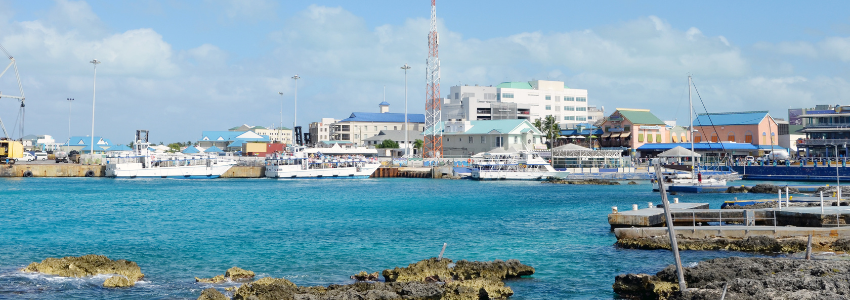
If the cargo redevelopment is to be carried out at the existing Seaport, could smaller cruise ships also be accommodated in the plans to reimagine the future of our cruise industry? Could this be achieved by increasing the facility to accommodate vessels with a berth of 30 feet to accommodate the smaller cruise ships calling here today? If so, we should have already started to talk to the cruise companies about that in a serious way. Including their financing and building the port redevelopment to provide for larger cargo ships and smaller cruise ships. Cruise lines have the expertise in building ports and would likely be incentivised to do so.
The Government’s SOC acknowledges that a Public Private Partnership (PPP) is a valid funding solution for the cargo project. So why not a PPP with the cruise companies? The SOC also acknowledges (in the appendix) that a larger cargo seaport at breakers could accommodate two cruise ships along with the larger cargo ships. So why not consider this for George Town rather than ruling it out? We already have a model of what such an arrangement could look like – albeit a new arrangement with cruise lines would be for a much smaller cruise port facility attached to a larger Cargo dock. It is illogical and irresponsible not to consider it.
Given the close link between cargo and cruise, the future of cruise tourism will need to be addressed in the cargo development business case that the Government is now developing; and not sidestepped as the Minister is trying to do.
The business case will also need to consider the viability of the various proposed alternative locations.
To date, only the Minister has talked actively about cargo port redevelopment. Given the importance and high-profile nature of such a project, it is essential that the country also hears from the Premier on whether he and his government actively support a larger Cargo facility. Without this support, the project will go nowhere. It is also important that the Premier, his tourism minister and the government be more explicit about their plans for cruise tourism.
In September 2022, the tourism minister stated that his ministry had commissioned a cruise tourism strategy which would serve as a roadmap for redesigning the approach to the cruise sector. But six months on, there is no sign of any strategic roadmap for redesigning the cruise sector.
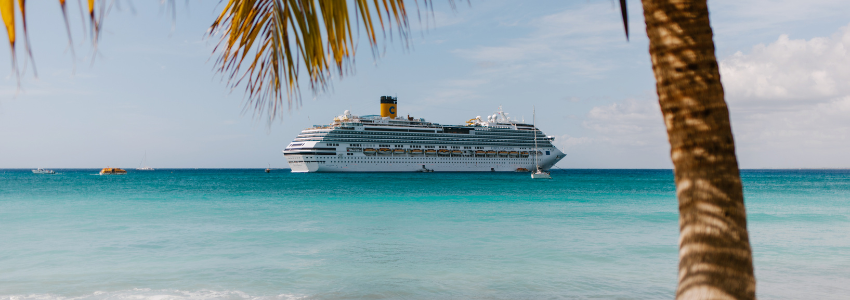
Following the election, and several times since, we advised the Government to consult with the Caymanian people about how they wanted cruise tourism to re-start. The closure of cruise tourism during the pandemic was, we said, an opportunity for the country to reimagine cruise tourism and set a different path for ourselves.
The Government did not heed this advice, and they re-started cruise arrivals without adequately addressing the future of our cruise tourism business – neither with the Cayman public nor with the cruise lines. The result is that in October last, the Minister was forced to tell businesses that rely on cruise passengers to scale back and plan to operate with 60% fewer cruise passenger arrivals over the next few years than in 2019. And so today, understandably, there is uncertainty about the future of our cruise tourism sector. Perhaps the future of cruise tourism should be included in the upcoming referendum.
The tourism minister should end the uncertainty and focus on how to reimagine and strengthen our cruise tourism business for the long term. Yes, we do need a new larger cargo dock facility, but the Minister cannot genuinely believe that he will get a cargo port by dredging through a pristine reef at Breakers, through to the land and excavating some 65 acres to construct the channel and berthing basin for an inland cargo port facility. And that is just one of three phases of a project that will cross several election and budget cycles. The cost, the time, the risk, and the environmental impact will be too significant.
If there is an opportunity to build a necessary larger port facility, then the existing location in George Town is where it will most likely be done. And if constructing a larger cargo port, it is logical to consider including one or two walk-off/walk-on piers for smaller cruise ships and working with the cruise companies to make this happen as a PPP for a combined modern cargo and cruise berthing facility. Repayment of the ‘build and financing arrangement’ could be from the ‘head tax’ charged to arriving cruise passengers. A PPP with the cruise lines will not only guarantee our cruise business over the long term but will avoid increasing port fees to pay for a financing arrangement for a new stand-alone cargo port. This, in turn, avoids increased costs to consumers. Keeping both facilities in one location also keeps costs down compared with a split location for cargo and cruise.
– The Progressives





